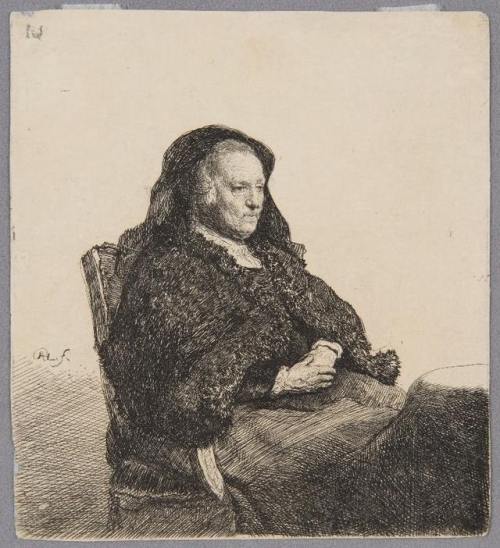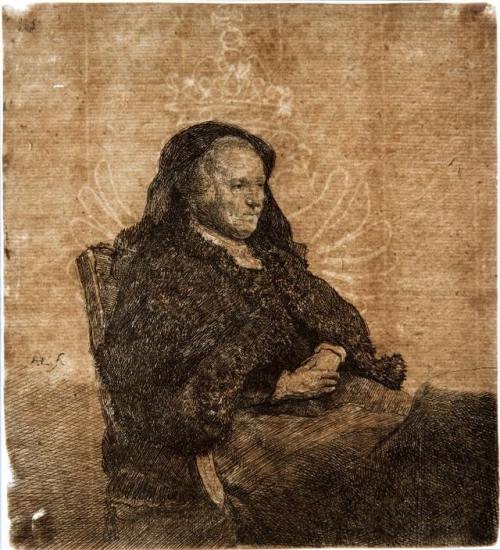Paper conservators often employ the use of transmitted light during the examination of works on pape
Paper conservators often employ the use of transmitted light during the examination of works on paper. Transmitted light can ease the detection of certain condition issues and reveal details regarding the structure of the artwork. We recently used this technique to examine Rembrandt’s Mother, an etching by Rembrandt Harmensz. van Rijn, in preparation for our Five Centuries of European Works on Paper exhibition.Above are images of the print in normal lighting conditions (left) and transmitted light, using a light box (right). In transmitted light, small losses, fractures, and areas of abrasion in the paper support were particularly apparent. The structure of the paper was also quite clear. Until the mid-eighteenth century, European paper was made using a laid papermaking mould—a ribbed wooden frame with a wire surface. To form a sheet, the mould was submerged into a vat containing water and paper pulp. When lifted from the vat, water drained from the mould, leaving a thin layer of paper fibers on the wire surface. The wet paper sheet was then transferred from the mould to felts, pressed, and eventually hung to air dry.In Rembrandt’s Mother, numerous fine horizontal lines (laid lines) and five prominent vertical lines, (chain lines) are visible in transmitted light. These “lines” are actually areas with less paper fibers, where the pulp was in direct contact with the wire surface of the mould, thus appearing more translucent on a light box. Darker bands along each side of the vertical chain lines are areas of greater accumulation of paper fibers, caused by the suction that occurs between the wires and the ribbed wooden frame of the mould when it is pulled from the vat. Paper with this characteristic is referred to as “antique laid”.A watermark at the center of the sheet is also visible in transmitted light. This was created by a wire design that was sewn to the chain and laid lines of the mould. This particular watermark depicts a crowned double-headed eagle with open wings. We like how it is juxtaposed with the image of Rembrandt’s mother, giving her the appearance of a queen in flight in transmitted light. Do you think Rembrandt did this intentionally?Come take a closer look at paper structure in Works on Paper—featuring over 120 works on paper from our European collection—on view through October 13 in our 1st floor galleries.Posted by Elyse Driscoll -- source link
Tumblr Blog : brooklynmuseum.tumblr.com
#bkmconservation#bkmworksonpaper#paper#print#paper making#transmitted light#examination#conservation#art conservation#18th century#art history#mold#frame#wire#watermark#fibers#pulp#antique laid

